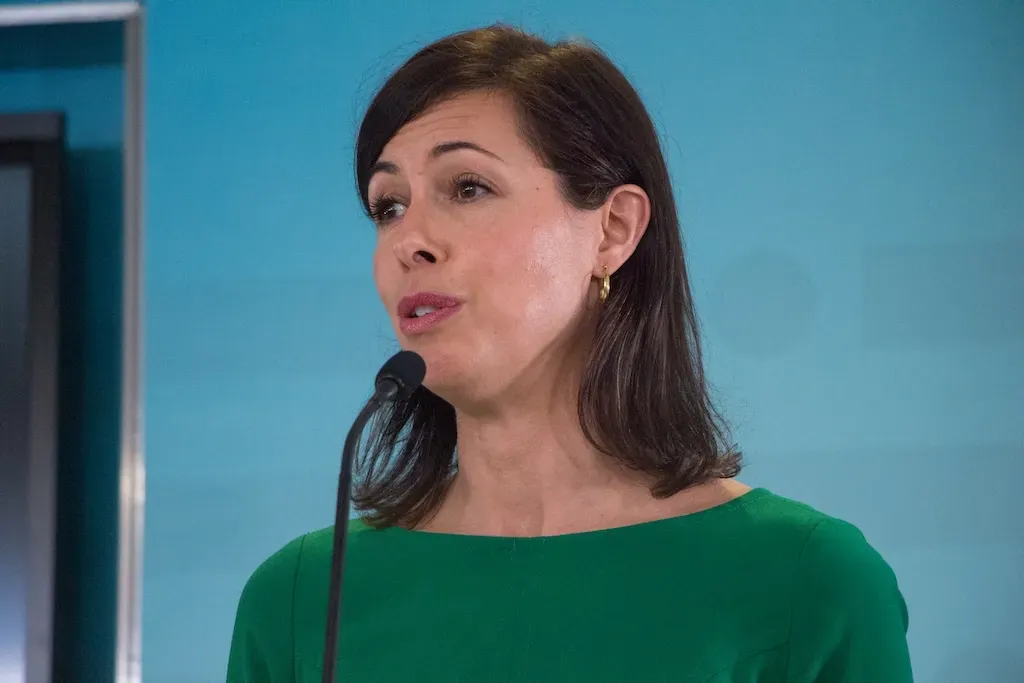FCC Chair Opposes Including Broadband Providers in Universal Service Fund
Including broadband providers in the USF would likely cost consumers more, Rosenworcel said.
Jake Neenan

WASHINGTON, January 29, 2024 – The head of the Federal Communications Commission wrote to lawmakers that tapping broadband providers for the Universal Service Fund would ultimately increase the burden on consumers, despite making more money available.
The USF spends roughly $8 billion annually to subsidize internet payments.
These go to low-income households, schools, libraries, and healthcare centers, as well as infrastructure in hard-to-reach areas. The program, stood up in 1996, is funded by fees on voice providers. This “has led, and continues to lead, to a smaller and smaller contribution base,” as telephone revenues decrease, FCC Chairwoman Jessica Rosenworcel wrote to Sen. Ben Luján, D-New Mexico.
Luján convened a working group in May 2023 to evaluate potential reforms aimed at making the FCC-managed fund more sustainable. The group went to Rosenworcel for input on some of those, including adding broadband providers, “edge providers,” like social media and streaming companies, and digital advertisers to the fund’s contribution base.
Adding broadband providers would increase the contribution pool to $250 billion from $33 billion and decrease the contribution factor – the percentage of end-user revenue, and thus each monthly bill, that goes toward the fund – from about 34 percent to about 3 percent, she said in her response letter, dated January 12 and posted January 26.
But that would still result in consumers paying more, Rosenworcel noted, because the contribution factor would for the first time be applied to broadband bills in addition to phone bills, and internet costs are high enough to cancel out the effect of a smaller percentage. An FCC report from 2022 estimated the move would increase internet bills by about $5 to $17.
It is possible companies would not pass the added cost onto consumers, but not likely: 82 percent of current USF contributors choose to do so.
As for edge providers, adding them to the contribution pool would balloon the contribution base to approximately $2.3 trillion by FCC estimates. But the move could still result in bills for streaming and other web services going up, Rosenwrocel wrote.
“We currently lack sufficient information to determine how significant the effect would be on overall consumer bills,” she wrote. “The Commission lacks authority to include these entities under current law, and if given the authority to assess edge providers, the Commission would need to develop a rulemaking proceeding and data collection to fully understand how to define edge providers, determine those subject to assessment, and identify what impact assessment might have on consumers.”
Industry groups have disagreed on this point, with tech companies arguing that it makes sense to go to broadband providers for funding since the USF is used to subsidize broadband. Internet providers have argued companies like search engines and streaming services, which reap huge profits while operating largely online, should contribute to the fund.
The commission estimates that collecting fees from just digital advertisers would have similar effects on the available cash and contribution factor as tapping broadband providers, but staff also think the move would likely lead to lower bills for consumers because “data indicates that an assessment on digital advertising is less likely to be passed on to consumers.”
“However, our analysis would benefit from congressional authority to conduct a comprehensive study and data collection,” Rosenworcel noted.
Affordable Connectivity Program
Commenters to the working group have suggested rolling the Affordable Connectivity Program into the USF. Rosenworcel repeatedly noted the move would “substantially increase” the expenses of the fund – the ACP spends about $700 million per month to subsidize internet bills for low-income households.
Despite the added costs, Rosenworcel said the extra cash available from tapping edge providers or digital advertisers would still result in lower payments from consumers, provided consumer facing edge providers don’t increase subscription prices too much.
The ACP, also managed by the FCC, was set up with a $14 billion appropriation from the 2021 Infrastructure Act and serves more than 23 million households. The agency is in the process of winding down the program, as funds are expected to run out in April.
For months, there have been widespread calls for Congressional action to refund the program, and a bill was introduced in January. Industry groups pushed the Senate Communications and Technology Subcommittee in September 2023 to absorb the ACP into the USF in an effort to address the uncertainty of funding through appropriations.
If the working group were to make such a move, the FCC’s Lifeline program would likely be up for retooling. That USF program currently provides less substantial discounts to low-income broadband subscribers, and has a lower participation rate.








